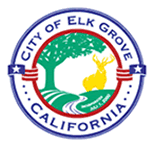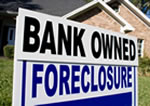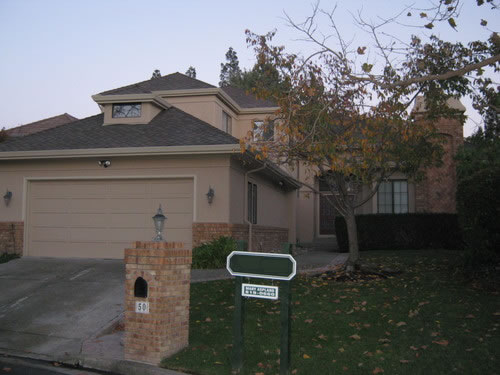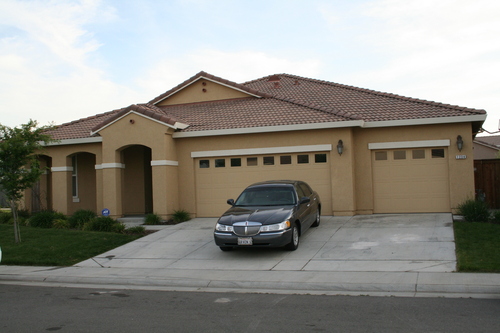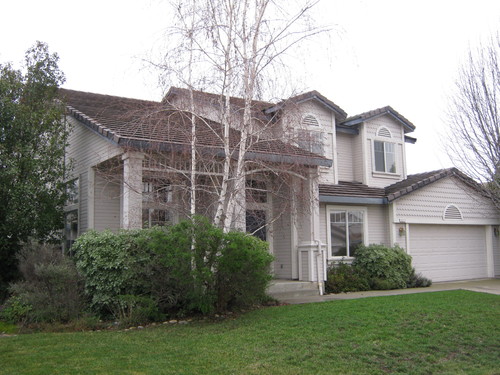Foreclosure
What is Foreclosure?
Foreclosure is a process that allows a lender to recover the amount owed on a defaulted loan by selling or taking ownership (repossession) of the property securing the loan. The foreclosure process begins when a borrower/owner defaults on loan payments (usually mortgage payments) and the lender files a public default notice, called a Notice of Default or Lis Pendens. The foreclosure process can end one of four ways:
- The borrower/owner reinstates the loan by paying off the default amount during a grace period determined by state law. This grace period is also known as pre-foreclosure.
- The borrower/owner sells the property to a third party during the pre-foreclosure period. The sale allows the borrower/owner to pay off the loan and avoid having a foreclosure on his or her credit history.
- A third party buys the property at a public auction at the end of the pre-foreclosure period.
- The lender takes ownership of the property, usually with the intent to re-sell it on the open market. The lender can take ownership either through an agreement with the borrower/owner during pre-foreclosure, via a short sale foreclosure or by buying back the property at the public auction. Properties repossessed by the lender are also known as bank-owned or REO properties (Real Estate Owned by the lender).
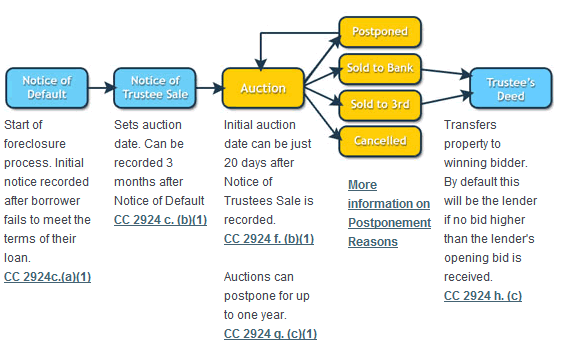
Bank-owned (REO)
If the lender takes ownership of the property, either through an agreement with the owner during pre-foreclosure or at the public auction, the lender will usually want to re-sell the property to recover the unpaid loan amount. The lender will then typically clear the title and perform needed maintenance and repair; Bank foreclosures can become government foreclosures if the loan is backed by a government agency such as the Department of Housing and Urban Development (HUD) or the Department of Veterans Affairs (VA). In that case the government agency would be responsible for selling the property.
The reason why residential properties prices continue to be depressed in many areas of the United States, is because of the large number of bank-owned properties that flood the market. These properties put a downward pressure on market prices. In many regional markets in California, by far the majority of properties on the market, are distressed sales, meaning they are either short-sales or REOs. At some point, the REO inventory will dry up, at that time the market prices will be determined by new homes prices, which are basically the cost of the land, the cost to build the homes, and the builders’ margins. Since current prices are well below replacement cost, when this happens, prices will surge back to normal.
What is a Short-Sale ?
A short sale is a sale of real estate in which the proceeds from selling the property will fall short of the balance of debts secured by liens against the property and the property owner cannot afford to repay the liens full amounts, whereby the lien holders agree to release their lien on the real estate and accept less than the amount owed on the debt. Any unpaid balance owed to the creditors is known as a deficiency. Short sale agreements do not necessarily release borrowers from their obligations to repay any defiencies of the loans, unless specifically agreed to between the parties.
A short sale typically occurs during the pre-foreclosure period, but it may also happen when the borrower’s loan is still current.
When a property is listed as a short-sale on the MLS (Multiple Listing Service), frequently the price listed has not been approved by the lender (lien holder). Therefore when a buyer offers at listing price, it may not necessarily be approved, later on, by the lender. In fact, often times, it gets subsequently counter-ed by the lender at a higher price. The buyer then has the option of either accepting the higher price or reject the counter.In the former case, the buyer then proceeds in purchasing the property, however in the latter case, the property will go back on the market.
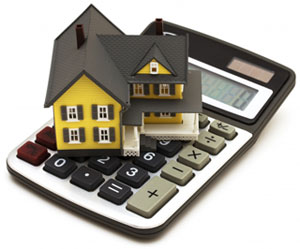















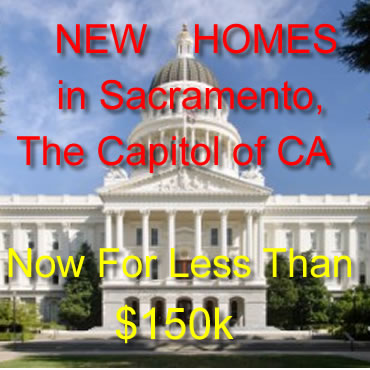

 Articles on Foreign Interest in US real estate
Articles on Foreign Interest in US real estate